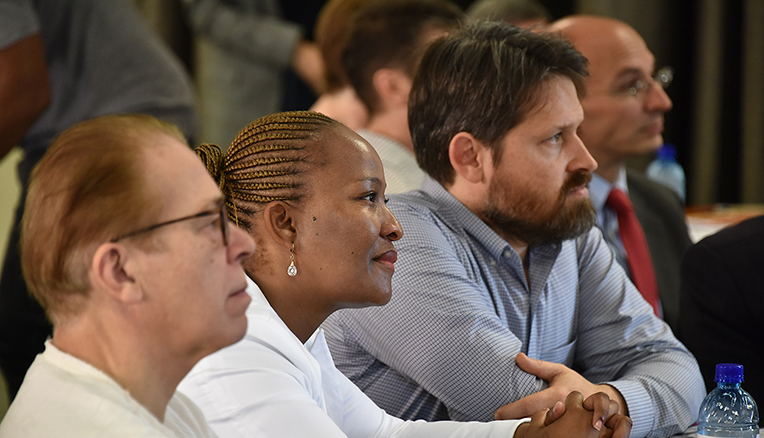Will an enclaved state work in a country like South Africa? How can universities produce graduates who will become engaged citizens, and what is the current status of the
ANC and the
DA? These were some of the key topics at a workshop on
South Africa and Africa: Prevarication at the Precipice, hosted by the
Department of Political Studies and Governance at the University of the Free State (UFS).
The two-day workshop is an annual collaborative discussion platform between the UFS, chaired by Prof Hussein Solomon, the
Southern African Centre for Collaboration on Peace and Security, and the
Osaka School of International Public PolicyThe workshop opened with Prof Francis Petersen, the UFS Rector and Vice-Chancellor who delivered his message from the perspective of higher education.
He spoke about the importance of universities in South Africa being able to produce graduates who will become active citizens.
Graduates should fulfill their role in society “Universities should be the place where we should educate and engage to let our students and graduates know what society should look like. If we don’t do that transformative thinking among our graduates we are going to perpetuate what society is,” Prof Petersen said.
“I hope this conference won’t just debate the issues because we already know the answers. I hope this workshop will say what we need to do as active citizens to ensure that we start new building steps. International engagement is also important. As is our engagement with the continent.”
Helen Zille on the State of South Africa Helen Zille, Chairperson of the DA Federal Council presented a talk on the
State of South Africa in which she tabled three variables she believes can save the country from the precipice. “There should be three variables which can make a democracy work; a separate state (not a party-ruled state), the rule of law and a culture of accountability,” Zille said.
Zille tabled the concept of an enclaved state a state which operates independently from party control. “There are increasingly isolated states in SA which are being pushed out of good governance and service delivery. An example of an enclave that functions well is the “justice enclave (Supreme Court of Appeal) in Bloemfontein”.
She reiterated the importance of active citizenship. However she added that people who are active citizens are usually not the ones elected to office.
 The workshop brings together political scientists, academics, politicians and journalists who robustly discuss local
The workshop brings together political scientists, academics, politicians and journalists who robustly discuss local
and international politics, economics and governance. ( Photo: Charl Devenish)
The role of active citizenship and the state of the country cannot be discussed in isolation from the state of the ruling ANC and the official opposition, the DA. Prof Dirk Kotze from the Department of Political Studies at Unisa, and Bonolo Selebano, Netwerk 24 political journalist, gave a glimpse into the status of Luthuli House (ANC headquarters in Johannesburg), and the DA.
“ANC party politics are not unique. They are following a global trend. However, the credibility of the ANC is a big issue,” said Prof Kotze. In the political arena globally, political parties are redefining themselves and it is important for the ANC to figure out where it finds itself. Selebano wasn’t too optimistic about the DA either, saying the party should return to its liberation ideals.